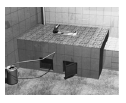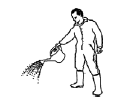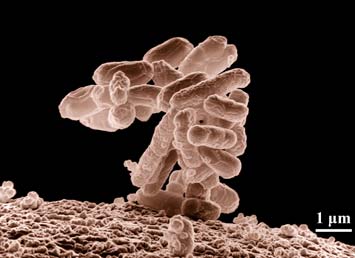Ecological Sanitation
Promoting health and preventing disease 1, 2, 3, 4
The main objective of ecological sanitation, and all sanitation approaches, is to prevent the spread of diseases by creating barriers between pathogensHuman excreta contain living organisms; some of them cause disease and are called pathogens. There are different kinds of excreted pathogens: bacteria, viruses, protozoa or helminths and human beings.
There are a number of options for creating barriers between excreted pathogens and the environment and thus for preventing the spread of pathogens. The traditional approach is to flush away the excreta (e.g. flush toilet and sewer system) or to store it in a deep pit (e.g. pit latrine).
However, both have limitations with regard to their efficiency in reducing or stopping the spread of pathogens. Ecological sanitation is based on the postulate that (i) not mixing urine and faeces and (ii) destroying pathogens in faeces by dehydration and/or decomposition is more effective at destroying pathogens than the traditional approach. See ecosan systems...









